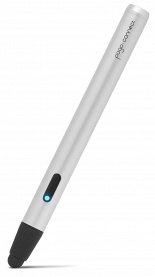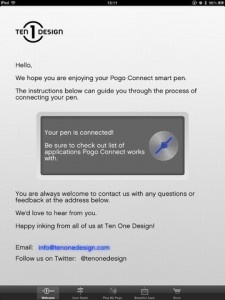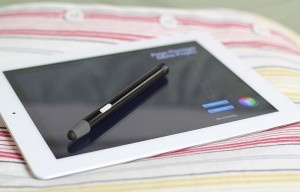Pogo Connect Bluetooth 4.0 Stylus for iPad Review

At 5.1" (130mm) with a price tag of $80, the Pogo Connect sports a stylish silver barrel with a rubber tip at one end and decorative cap at the other. There is a single button on the side and a LED light. It uses one AAA battery and because it’s Bluetooth 4.0 that battery will last a long time. A little wider than a regular stylus, the pen lacks heft, but it fits comfortably in the hand and has good balance. The tip is the same thick dark rubber that one finds on traditional styluses and is magnetic for easy replacement. Ten One promises new tip designs in the future.
Pogo Connect doesn’t pair with the iPad in the usual way a Bluetooth device would. To assist in getting everything set up correctly, users can download the free Pogo Connect app to link the stylus and then each of the 19 compatible apps - up from the original 13 - goes its own way. Some apps like Procreate just find the pen, while others like Noteshelf require users to poke around in the settings. It's easy.

One of the more glaring flaws when I first tested the Connect back in December was that it didn’t prevent palm marks, but recent updates have improved that functionality. How well it works seems to depend more upon the app than the stylus.
And what about pressure sensitivity? That’s the key selling point, but it’s very hit or miss. Some apps respond to pressure by varying line thickness, others opacity, and none respond to a light touch despite claims that the proprietary Crescendo Sensor technology requires “0 grams of activation force.” That said, the Connect outperforms captive models. It's not transformative, but with the right app and practice, sketching feels more holistic.
There are a couple of neat features worth mentioning: the Pogo Connect app has a pen locator, the button on the stylus works as an undo command, and the LED light indicates the active ink color. Still, while somewhat more intuitive than capitative models, the Pogo Connect needs a lot of tweaking before it warrants the hefty price tag, much less turns the iPad into a device that can compete with a dedicated graphics tablet.
A full list of compatible apps can be found here on the Ten One Design site.



